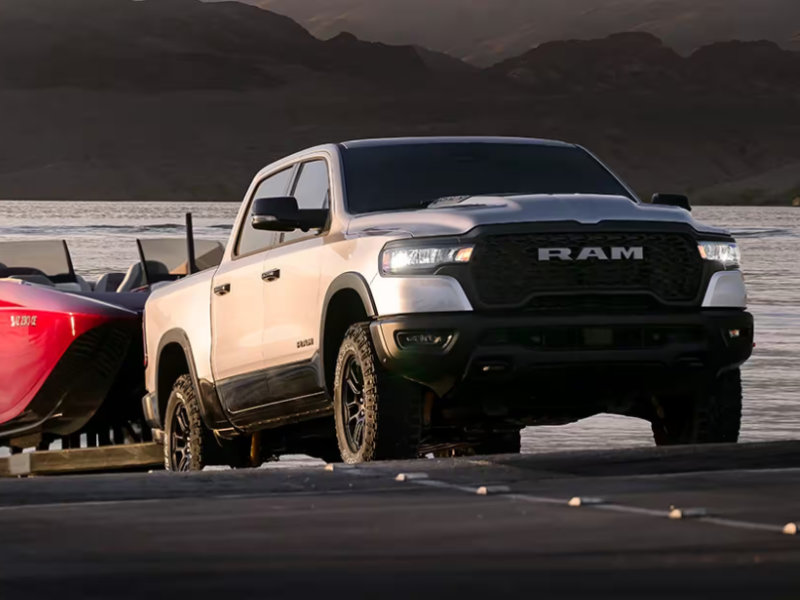
Southfork Ram - Is the Ram 1500 or Ford F-150 better for daily driving comfort in Katy, TX?
Shoppers often ask a simple question with big implications: which truck feels more comfortable day to day, the Ram 1500 or the Ford F-150? Comfort is not just seat padding—it is a blend of ride quality, noise isolation, cabin ergonomics, and the way technology reduces driver workload. In this guide, we unpack how each truck approaches daily driving, from chassis design to screen layouts, and where differences appear when the miles add up in and around Katy, TX.
Ride quality is a major separator. Ram’s rear coil-spring five-link suspension—tuned across trims that range from work-focused to luxury—naturally settles after bumps and expansion joints. That translates to less vertical motion in the cabin, especially when the bed is unladen and on broken pavement. Ford’s F-150 continues with a capable, traditional leaf-spring setup that handles payload admirably, but on pockmarked suburban streets, the ride can feel busier. If most of your seat time is commuting, running errands, or stacking jobsite stops, Ram’s chassis tuning makes itself known in how relaxed you feel after a long week.
- Seat design and adjustability: Ram offers available 24-way power front seats with heating, ventilation, and massage, making it easy to dial in posture for long hauls; Ford provides supportive seating with heating and ventilation on upper trims but does not match Ram’s 24-way adjustability.
- Cabin quietness: Ram emphasizes sound deadening and premium sealing, helping reduce wind and road noise at highway speeds; Ford is quiet for the class, yet Ram’s tuning and isolation deliver a more serene impression on coarse surfaces.
- Screen ergonomics: Ram’s available 14.5-inch Uconnect® 5 and 10.25-inch front passenger display simplify task sharing and reduce menu-diving; Ford’s 12-inch center display is clear and quick, with a well-organized interface that works best for single-user control.
- Low-speed maneuvering: Both trucks offer Surround View Camera systems and trailer-focused views that reduce stress in tight lots; Ram’s camera mosaics and large screen space make angles and overlays easier to read at a glance.
- Driver assistance: Each truck equips advanced driver-assist suites to ease highway travel; feature availability varies by trim, so a tailored walk-through is key to aligning tech with your commute.
Technology can reduce fatigue as much as seats and suspension. The Ram cabin revolves around quick, intuitive controls: dedicated climate keys, large tiles in Uconnect 5, and a passenger screen that lets your co-pilot manage navigation or entertainment without distracting the driver. Ford’s interface is clean and logical, and BlueCruise hands-free capability on compatible roads can be a boon for long interstate drives. But for the routines most owners face—merging, stop-and-go, lots of parking—the combination of Ram’s camera views, bigger touch targets, and thoughtful hard keys helps you move with fewer steps and fewer glances away from the windshield.
Practical storage also shapes daily comfort. Ram’s RamBox® Cargo Management System integrates lockable, illuminated, drainable bins into the bed sides, keeping messy tools or gear outside the cabin while staying easy to reach. Inside, generous under-seat storage and configurable bins hold devices and small items securely. The F-150 counters with clever bed solutions of its own and configurable interior storage, but Ram’s integrated bins and 60/40 split swing-out Multifunction Tailgate create small conveniences that add up every single day.
Frequently Asked Questions:
Which truck is quieter on the highway?
Both are quiet for full-size pickups, but many drivers report the Ram’s cabin feels calmer over expansion joints and coarse asphalt, thanks to the coil-spring rear suspension and extensive sound insulation.
Does the larger screen in the Ram really make a difference?
Yes. Larger, clearly labeled tiles on the available 14.5-inch Uconnect 5 reduce menu layers and make camera overlays easier to interpret. It is particularly helpful when lining up a hitch or navigating tight lots where quick glances matter.
How do the seats compare on long drives?
Upper-trim Rams offer available 24-way front seats with ventilation and massage, which can lessen fatigue on multi-hour trips. Ford’s upper trims provide heated and ventilated seats with capable contouring, though with less adjustability.
Every driver prioritizes different comfort attributes. If highway hands-free capability on specific mapped routes is your top need, a properly equipped Ford can check that box. If you want an all-conditions calm—from choppy neighborhood streets to long weekend returns—Ram’s ride tuning, cabin isolation, and expanded screen space deliver a consistently low-stress experience. The best step is to test both on the roads you drive most, including the rough patches that tend to magnify differences.
We invite you to compare trucks back to back with guidance from Southfork Chrysler Dodge Jeep Ram—our team can map a route that highlights your commute and the places you tow, park, and turn around most. We are proudly serving Katy, Rosenberg, and Clear Lake with detailed walk-throughs, towing demos, and trim-by-trim breakdowns so you can choose the configuration that feels right every day.